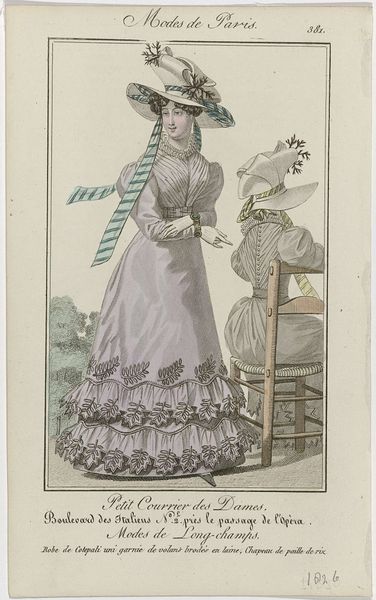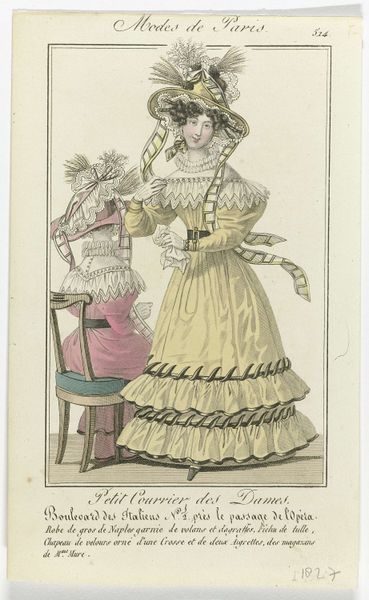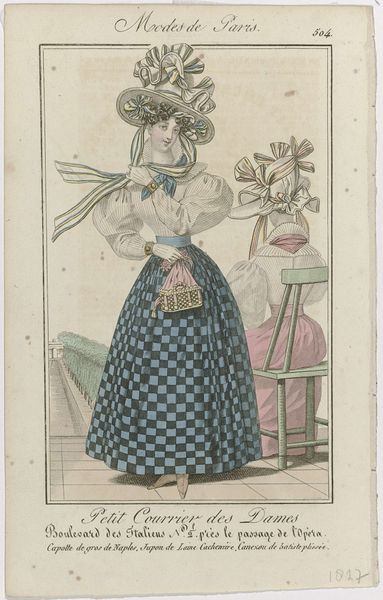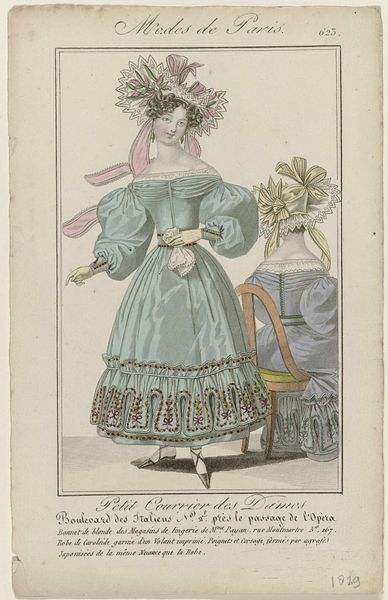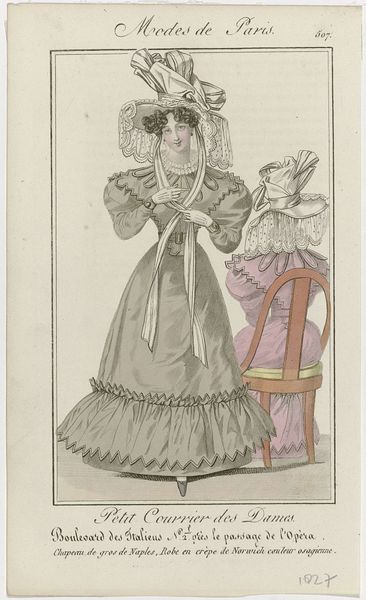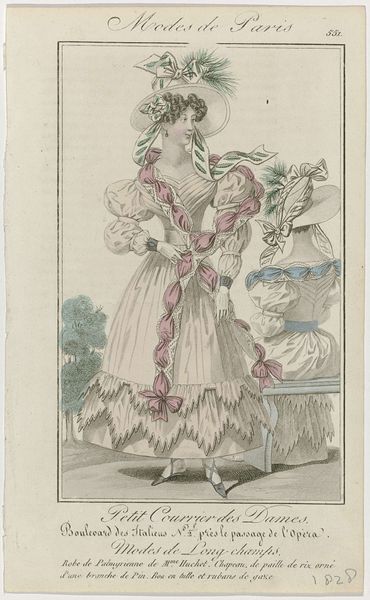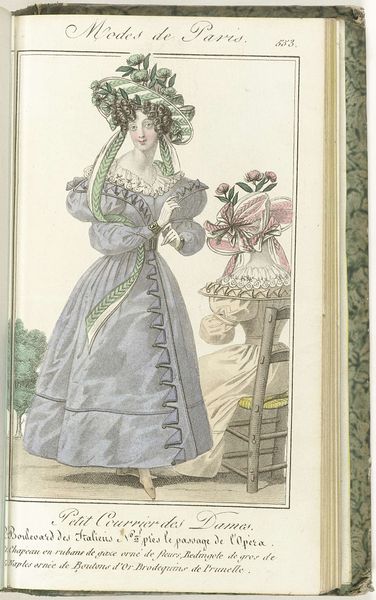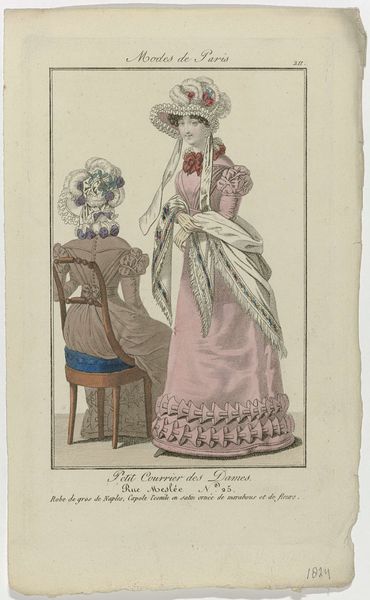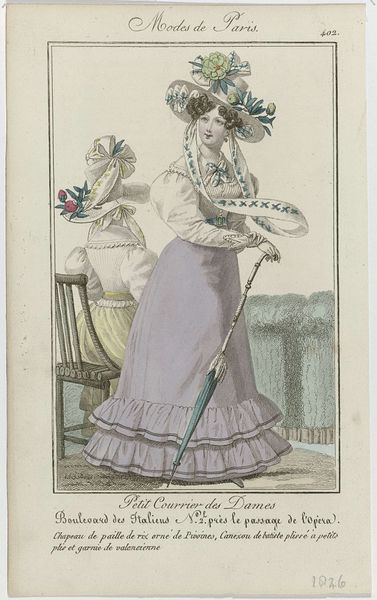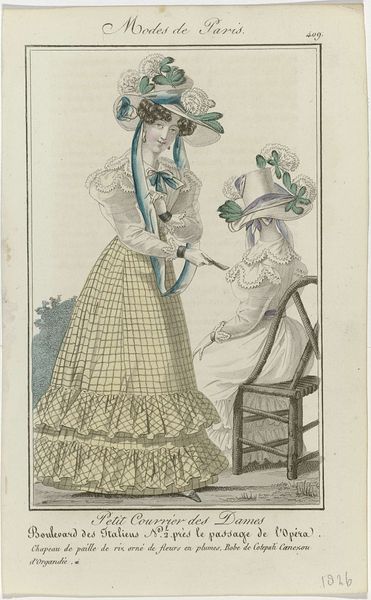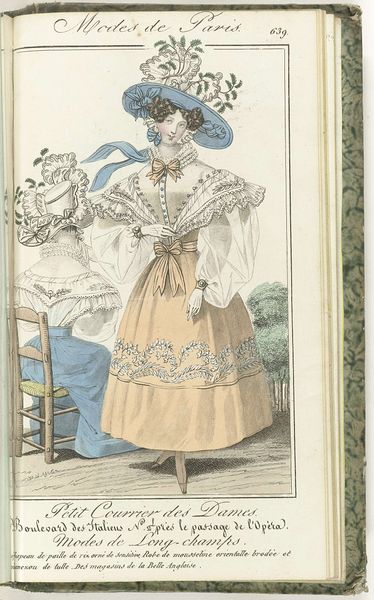
drawing, print
#
portrait
#
drawing
# print
#
historical fashion
#
romanticism
#
genre-painting
#
dress
Dimensions: height 208 mm, width 127 mm
Copyright: Rijks Museum: Open Domain
Editor: This print, "Petit Courrier des Dames" from 1826, showcases Parisian fashion. It features two women, one standing and one seated, both dressed in elaborate gowns. I’m really struck by the detail in the dresses, and I’m curious, what kind of commentary might this print be making on women during this time? Curator: It's essential to remember that fashion prints weren’t just about clothes. This image reflects the aspirations and restrictions placed on women in the early 19th century. The attention to detail wasn't merely aesthetic. Think about the context: the rise of industrialization meant new fabrics and designs were becoming more accessible, but social roles remained rigid. This print becomes a site where tradition and modernity clash. Editor: So, you are saying that fashion becomes a means for these women to assert some kind of agency, given the constraints placed upon them by society? Curator: Precisely. Consider the female gaze here. While the print is ostensibly meant for women consumers, how do you think the male gaze might factor into its creation and circulation? Who is really benefiting from perpetuating these ideas and ideals of beauty? What about labor? Who were the women sewing and constructing these elaborate fashions? Editor: It does raise questions about who benefits from the display of wealth. Now I see these fashionable gowns as reflecting deeper social power dynamics, ones related to gender, but also to class. Curator: And to visibility, and access to visibility, doesn’t it? Fashion becomes a powerful but also limiting tool. These prints can tell us much more than just what people were wearing! Editor: Definitely. I’ll never look at a fashion print the same way again. Thanks for offering that historical context!
Comments
No comments
Be the first to comment and join the conversation on the ultimate creative platform.
